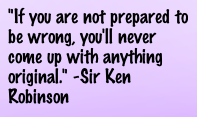Did you know?
After watching Did you know? 3.0 – A John Strange 2012 Version based on Did you know 3.0 by Karl Fish and Scott McLeod, I realized many facts I had not before. China is huge! For one of us, there are 1,300 of them. The Chinese are more likely to be bi-lingual, and they can speak better English than us Americans. India is even bigger. They have more academically privileged children in their country than all of the children in ours.
1,097,220 people use YouTube per minute. Just think of how many that would be in one day! Not only that, but 48 hours of video is added in the same minute. There are 1,393,519 Google searches per minute. That tells me too many people rely on Google. On average one year ago EDM310 students reported they spend 1 hour and 16 minutes text messaging other. This number is not much less than the high school average at just short of 2 hours. On top of all of that statistics show that almost every home has at least one computer.
These videos made me realize how technology is growing. Fisch and McLeod’s video stated that a college student going for a four-year degree would have outdated information by their third year of college. That just amazes me! As both videos stated, we will be teaching students for jobs that do not even exist yet.
In Dr. Strange’s version he asks if we are ready? What is our role in preparing our students to use technologies that do not exist yet? As a math major I am not sure what other types of technology would be used for math than what is used now. I am interested to see over the next ten years what that may include.
Mr. Winkle Wakes
Mr. Winkles Wakes by Mathew Needleman was a cute little movie about an old man, Mr. Winkles, who had slept for 100 years. After awaking he went to an office. Not knowing what anything was because of all the machines made him feel ill. So, he went to the hospital. In the hospital he was amazed to see there were machines keeping people alive. He did not think that the hospital could help him. He went for a walk and came across a school. Going inside everything was as he remembered. There was on machine, but it was dusty and not in use. It comforted him to know that after 100 years everything in the school had remained the same.
The movie made me think, how could schools stay the same that long? How can they not change what is being taught in schools when everything in the real world is changing so fast? The answer: schools are changing but not as drastically as the real world. Schools do not have the funding they need to change as fast as the real world, and it would be impossible to follow a curriculum that changes so quickly. I have always been taught that grade school/high school is to prepare for college and college is to prepare for the real world. In some aspect this is true. However, think about all of the students who drop out or do not go to college. Those students need to be prepared for the real world right out of high school. How are they supposed to be prepared if the schools have not changed in the last 100 years?
Sir Ken Robinson: The Importance of Creativity
"If you're not prepared to be wrong, you'll never come up with anything original." This was my favorite quote from Sir Ken Robinson’s talk on "The Importance of Creativity". Throughout out his speech he talks about how traditional teaching focuses on of course mathematics, science, history, and English and grammar. As we get older we are taught that the arts and creativity are not important because we think that normal people cannot get a job knowing and doing things like dancing, drama, singing, and so on. We have all heard of the starving musician.
He also said, “children are not afraid to be wrong. If they don’t know they will have a go.” In this I find myself realizing how many times I have not spoke up in class or some type of instance because I was afraid of being wrong. Creativity is something most children do not keep through high school. They may not get out of elementary school with it. Then when there is a project to be done they feel lost as to what is “supposed” to be done. There are still jobs out there for creativity such as billboards, commercials, websites, and graphics for shirts or commercials and such. The list goes on once you start to think about it. We just need to find a way to incorporate them into the school curriculum.
Glass
I am blown away by the technologies in Corning’s video A Day Made of Glass 2. The girl in the video wakes by the window in her room going from pitch black to bright and sunny. The glass had a type of technology to dim the window or make it bright. The same thing is in the dad’s car later on her way to school. She has a tablet to choose what she wants to wear and slides the image to be on her mirror. She chooses her clothes and the doors of those specific items open. She and another little girl get in the car and change the dashboard of the dad’s car with their tablet! I was watching with my mouth open in awe.
At school, the roof was made of a solar type of glass to gain energy from the sun. In the classroom the teacher used the same type of technology as the closet door to teach her class. Each student had a tablet in front of him or her, and they could see up close what the teacher was doing. With this in the classroom it could solve an issue of children who are visually impaired. They would be able to look at their screen in front of them rather than trying to focus on the one farther away.
The most amazing thing in the video was the doctor on a video conference. One doctor was in the U.S. and another in China. These doctors are collaborating on a patient.
There are many other types of technologies used in this video that I would like to see some day. The crazy thing is they are already making them. Eventually we will have them on the market. However, I fear they will not be cheap. All of the Technologies used in the Corning video are explain in Corning’s narrated video A day Made of Glass 2: Unpacked.There is also a demonstration video Project Glass: Live Demo at Google.
I am really interested in seeing all of this happen in the future. However, Mr. Winkle would not, and that is okay with me. As the times change our technology changes, and as technology changes we do too. Why should our schools and classrooms be any different?




Thorough, thoughtful, very well done! Thanks!
ReplyDelete